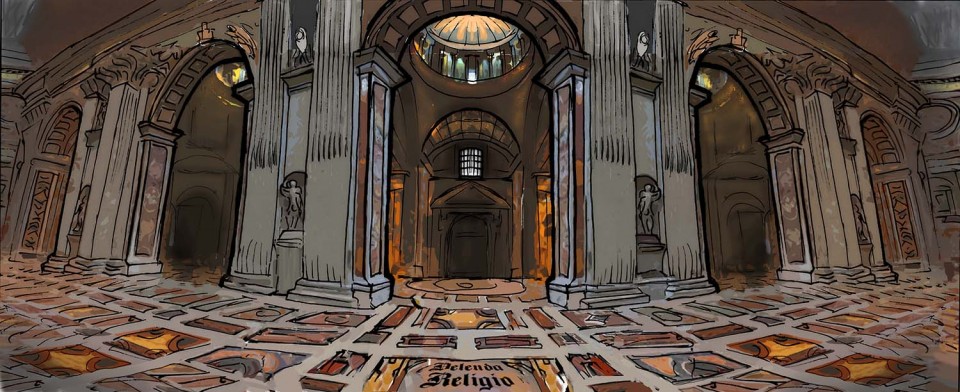The most obvious public activity which is highly theatrical can be seen in the orchestration of American political campaigns. It is perhaps less obvious but just as present in courtrooms, in the halls of justice. This struck me when I came across the phrase in the title, halfway through reading the novel by John Grisham (“the master of the legal thriller”), “The Litigators”, a cynical, hilarious story of a mass-tort case against a giant pharmaceutical. Curiously, it made me think of another type of off-stage theater, Catholic liturgy. But I realized immediately the enormous difference between the legal and liturgical settings. In Grisham’s novel, all the attorneys involved are portrayed as hypocritically play-acting the legal preliminaries to a projected trial by jury, knowing that the outcome, to everyone’s benefit – especially their own 40% of the compensation awarded the plaintiffs – would be out-of-court financial settlement. The case would never come to trial, but the protagonists were pretending it would; it was “nothing more than good theater”.
At a Catholic Mass, the majority of the congregation and, though there must be occasional exceptions, the celebrant himself, firmly believe that what is going on is for real : God really is listening to their prayers, the faithful really are admitting that they are unworthy of His mercy; they even believe that the “Eucharistic species” – the bread and wine – really do become the Body and Blood of Christ.
All of which does not mean that the Liturgy cannot also be great theater. When all the stops are pulled out, as in a Papal Mass televised worldwide, attended by thousands of the faithful in the presence of scores of red-robed Cardinals, with the gorgeous vestments of the papal celebrant and his assistants, the solemnity of the atmosphere aided and abetted by magnificent music and Gregorian chant, the spectacle may rival performances on the stages of the world’s most sumptuous theaters. One of the notable advantages enjoyed by liturgical functions, moreover, is the setting. No theater can rival St Peter’s Basilica or any other Gothic cathedral or even many less spectacular churches, the very soaring architecture of which serves to reinforce the “Sursum corda !” (“Raise up your hearts !”) at the heart of the Catholic Mass.
An atheist – especially one who spent half his eighty years attending, and seven years celebrating, Mass – when he sees such liturgical theater on TV, cannot but be amazed that people really do believe it is what they claim it to be. But I am forced to admit that, to a point, such credulity is understandable. Never having questioned the doctrine behind it, the congregation experiencing the beauty of the ceremony finds it reinforces their faith. It will take more than this Blog to get them to see through what even atheists admit is often superb theater. Maybe I should pay a priest to celebrate a Mass for the intention of getting believers to see that that is all the Mass is : theater.
RIDENDA RELIGIO

Theatre indeed. At Béhoust, the seminars you ran were delivered with your natural theatrical flair. We who didn’t know you in your robes days, can only imagine the impact your theatrical performance had on your devoted worshippers. You always know your subject, as does Grisham. We’ll chew over that fat on Friday.
LikeLiked by 1 person
Too kind ! But in my sexy sandals, cowled brown habit and white cord (all this covering my tee-shirt and shorts), completed in cold weather by a Harry Potter cloak, I was competition for Peter O’Toole. My only other rival was Archbishop Fulton Sheen.
LikeLike
Sounds like Sean Connery was lucky you didn’t audition for that role in The Name of the Rose.
LikeLiked by 1 person
That, my fierce friend, has to be the unkindest cut of all. 007 beats 000 cowls down.
LikeLiked by 1 person
I bet you looked the very image of William of Baskerville haha
LikeLike
More like St Anthony of Padua without the lilies.
LikeLiked by 1 person